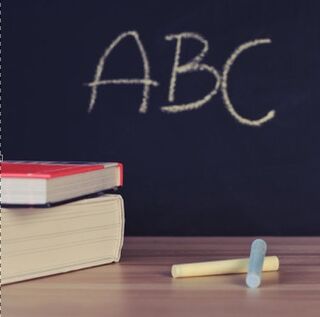Health
Back to School
The nation has no plan to save the lives of students, families, and teachers.
Posted August 27, 2020 Reviewed by Jessica Schrader

A few weeks ago, like many teachers across the country, my brother returned to school. Mike teaches at Fortuna High School in Fortuna, Calif. He is a deeply committed educator, and has been for decades. One year, the students in his school voted him their “most trusted” teacher.
In early August, by a narrow vote, the Fortuna school board sent Mike, his fellow teachers, and most students back to the physical classroom despite the continuing threat from COVID-19. Parents do have a choice: in-classroom learning or virtually, from home. Many of those, who can afford it, will keep their kids at home with Zoom. But many others, particularly the essential workers who are underpaid and overstressed, do not feel they have a choice. They send their kids to school.
Parents and educators all over the country are in a bind, facing no-win decisions that are not only a threat to physical health to children and themselves, but to their mental health as well. And yet, to make schools safer, alternative methods do exist—some of them tried and tested long ago. But nationally, statewide, and in most cases, locally, there is no plan. Or funding.
Let me say up front that school administration and staff members should not be blamed for the infections that may well follow. As usual, we’re dumping the hardest societal problems on schools, at a time when the nation’s leaders are unwilling to invest the money and effort required to deal with them. COVID is just the latest dump.
Mike’s first day back at school was August 10. He walked into a classroom of approximately 25 students where desks were 3 feet apart. He was dumbfounded to discover that a shower curtain had been rigged to separate him from the students. As for the mitigating value of fresh air, the windows in Mike’s classroom (because of prior security precautions) won’t open beyond about a foot. Which is better than having no windows, which is the reality for many schools built in recent years, when the educational establishment decided that, for students, looking out the windows was too .... distracting.
My brother has managed to spread out the desks a bit. He’s not sure how many other teachers have been able to do that, because of their classroom sizes.
Admittedly, keeping teenagers apart is nearly impossible. But sitting at desks 3 feet apart, in poorly ventilated classrooms? Really? Recently, the California Department of Health updated its guidance for schools related to physical distancing and “other adaptations.” As issued by the governor, the CDPH guidelines notification “requires that all adults stay six feet from one another and six feet away from children, while students should maintain six feet of distance from one another as practicable.”
Read that sentence carefully.
Teachers are required to practice social distancing, while students “should” stay their distance “as practicable,” a subjective judgment at best. In the state guidelines, there is no mention of the one thing that could be objectively measured: the physical distance between student desks.
Perhaps this set of regulations is simply a recognition of reality, or maybe it’s just another example of civic avoidance or impotence.
In addition to juggling their students’ safety (and their own), Mike and his colleagues are required to combine both traditional and virtual forms of instruction. At his school and many others, they record or stream their lectures to at-home students whose parents have chosen to keep their kids at home.
The high school does take COVID-related precautions. Temperatures are measured as students arrive. One student, scheduled for first period in Mike’s classroom, was sent home with a temperature on the first day of school. Others may have followed. Masks are required, though it’s unlikely that all students or even staff will wear them properly all the time. My brother does credit his school with “some pretty creative scheduling” to keep the number of students in each classroom relatively low. Students attend two classes a day, each lasting two hours and 15 minutes. That’s a long time for teenagers to stay at their desks, but at least they don’t spend as much time as usual in crowded hallways, where social distancing is all but impossible. To further reduce the number of contacts, the school releases students earlier than in the past, at 1:10 p.m.
Such precautions are better than nothing, but in schools throughout California and the nation, other actions can also be taken.
Last week, Dr. Anthony Fauci, who heads the National Institute of Allergy and Infectious Diseases, emphasized that on school buses, windows should remain open, and that students should get “as much outdoors” as possible. “If you look at the superspreader events that have occurred, they’re almost always inside.” Examples include nursing homes, meatpacking warehouses, prisons, weddings. And now, in schools, Mike says his principal “is OK with me taking the kids outside, because in theory I could use my cell phone to access Zoom.” A laptop with a Wi-Fi or phone company connection could work as well. But when cold and rainy weather sets in, as it always does along the far northern coast of California, how will students spread out?
Some school districts are bringing in buses as temporary classrooms. RVs could be used, as well. Companies could donate the use of empty warehouses that have good ventilation and the space to spread out. Or open-air tents could be set up on parking lots or playing fields. Too cold? Bring in portable heaters, and wear coats. Some schools are creating temporary or permanent outdoor classrooms.
These are not radical ideas, or new. Even before COVID-19, many schools were moving their classes outside as much as possible. The reason: a growing body of research shows outdoor classrooms are associated not only with improvements in psychological and physical health, but also with better cognitive functioning and higher grades for many students.
On July 17, an article in The New York Times reported how, in the first two decades of the 20th century, a tuberculosis epidemic “ravaged American cities, taking a particular and often fatal toll on the poor and the young.” Then, in 1907, two physicians proposed that schools shift to open-air classrooms, an idea imported from Germany.
“Within a matter of months, the floor of an empty brick building in Providence was converted into a space with ceiling-height windows on every side, kept open at nearly all times,” Ginia Bellafante reported. Children wore blankets known as “sitting bags,” with heated stones at their feet. “The experiment was a success by nearly every measure—none of the children got sick.” Open-air schools began to propagate in schoolyards, on roofs, and one New York school set up outdoor schoolrooms on an abandoned ferry.
Today, the New York City Housing Authority “has 1,000 playgrounds that could be commandeered.” And the Parks Department has 35 recreation centers, “already outfitted with gyms and bathrooms that could accommodate a few thousand children,” she reports.
Right now, even in this grim moment, cities and towns all over the nation could be innovating in ways that could have a beneficial long term impact on public and private education.
But for educators and parents, the COVID bind is real. Pressure builds. An extension on unemployment benefits does not appear to be forthcoming. Parents do need to go back to work. They do need help with their kids. Their children do need a good education, virtual or in person. Not later, but now. A school should always be a safe place—and for some students, school has been the only safe place.
But until school boards and others who call the shots for public education adopt and fund some profoundly creative innovations, and until a vaccine reaches the majority of Americans, children and their families will not be safe. Nor will teachers.
Many school districts have remained closed. In a Los Angeles Times commentary, Austin Beutner, who heads the Los Angeles Unified School District, argues that the best way to ensure safe classrooms is to test everyone for the virus—in LA, that would mean nearly 700,000 tests—and to have a contact-tracing program in place. He writes: “Testing and contact tracing will cost money. We expect the effort in Los Angeles Unified to cost about $300 per student over the course of a year. But that is a small fraction of the $17,000 Californians invest each year to educate a student, and the dollars pale in comparison to the importance schools will play in reopening the world’s fifth-largest economy.”
Nonetheless, the Trump administration insists that schools should be fully open. Education Secretary Betsy DeVos has proposed no plan for how to do that safely, let alone suggested a funding plan for safer schools.
Only a national plan for tackling COVID will prevent schools, including Mike’s, from becoming superspreaders. Already, colleges and universities that opened earlier in the month are shutting down because of rising rates of infection. The same will probably happen soon in K-12 schools.
We’re wasting time, money, and lives. If there was ever a moment to call for an emergency tax on the highest-income Americans and companies (as we did in World War II) and for a guaranteed annual income (which Nixon briefly considered) to help families get through this period, it’s now. But we hear no bugle call. The cavalry is not coming to rescue those families losing everything, or the students, or the courageous educators.
My brother is torn between worrying about his family’s health and his loyalty to his students. He does not readily mention his own health. Mike is 65. A few years ago, he had serious heart surgery. I ask him about retirement. He says he does not want to desert the young people to whom he is devoted.
True to form, my brother is excited about his new class of sophomores. Yesterday, I received this text from him: “Well, we’re outside on a beautiful day and I’m implementing a new—at least for some of my students—technology, one that a lot of kids rarely utilize. Reading!! And incredibly, they are!”
Like good teachers all over the country, Mike persists.
___________
Richard Louv is the author of 10 books including “Last Child in the Woods: Saving Our Children from Nature-Deficit Disorder” and his most recent, “Our Wild Calling.” He is co-founder and chair emeritus of the Children & Nature Network.
References
To learn about research on the psychological, physical and cognitive benefits of outdoor learning, see the Children & Nature Network Research Library, which offers abstracts for over 1,000 studies.
Re-Opening Schools in a Pandemic - FindingNature.org
The National COVID-19 Outdoor Learning Initiative
Schools Beat Earlier Plagues With Outdoor Classes. We Should, Too
Two Ways to Win in a No-Win Situation, by Leon F. Seltzer Ph.D., Psychology Today




